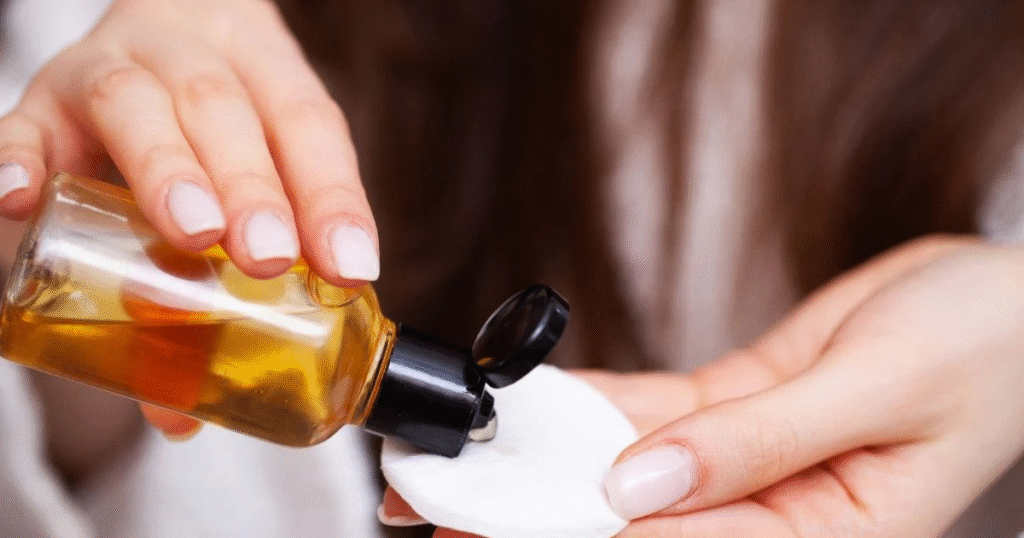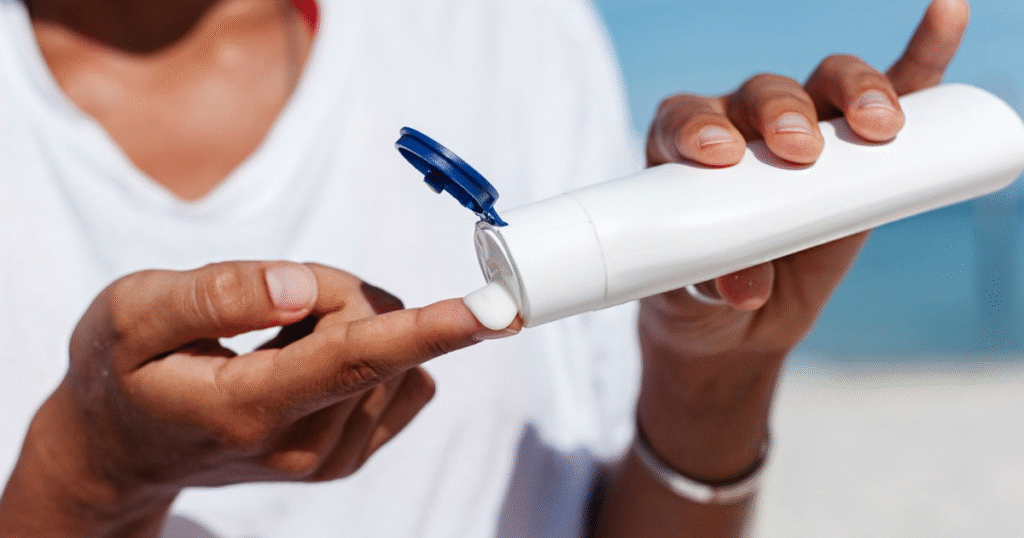Achieving glowing, radiant skin is not just about using the right products; it’s about consistency, understanding your skin type, and creating a routine that works best for you. Whether you have oily, dry, combination, or sensitive skin, everyone deserves to feel confident and beautiful in their own skin. In this article, we will break down the ultimate daily beauty routine for glowing skin, offering insights into cleansing, toning, exfoliating, moisturizing, and protecting your skin from the environment.
1. Start Your Day with a Gentle Cleanser
Cleansing is the foundation of any skincare routine. It removes dirt, excess oil, and impurities that accumulate on your skin overnight. A gentle cleanser will ensure that your skin doesn’t feel stripped or dry, but instead remains fresh and hydrated.
Choosing the Right Cleanser
- For Oily Skin: Opt for a gel-based or foaming cleanser to balance oil production.
- For Dry Skin: Look for a creamy, hydrating cleanser that won’t rob your skin of moisture.
- For Combination Skin: Choose a gentle, non-stripping formula that addresses both oily and dry areas.
- For Sensitive Skin: Pick a fragrance-free, soothing cleanser with calming ingredients like aloe vera.
Morning Cleansing Tip
Wash your face with lukewarm water, as hot water can strip your skin’s natural oils, and cold water may not fully cleanse the skin.
2. Apply a Toner to Balance and Prep the Skin

Toning is an essential step to ensure your skin is balanced and ready for the following products. It helps tighten pores, restore pH levels, and add an extra layer of hydration.
How to Use Toner
After cleansing, apply a toner with a cotton pad or your hands, gently patting it onto your skin. Avoid using toners with alcohol as they can be too harsh and drying for your skin.
Choosing the Right Toner
- For Oily Skin: Choose a toner with ingredients like witch hazel or salicylic acid to reduce excess oil.
- For Dry Skin: Opt for a hydrating toner with ingredients like rose water or hyaluronic acid.
- For Sensitive Skin: Look for calming toners containing chamomile or aloe vera.
3. Exfoliate to Remove Dead Skin Cells
Exfoliation helps to slough off dead skin cells, promoting cell turnover and revealing smoother, brighter skin. While exfoliating is important, it shouldn’t be overdone.
How Often Should You Exfoliate?
Exfoliating 2-3 times a week is generally sufficient for most skin types. Over-exfoliating can cause irritation, especially for sensitive skin.
Types of Exfoliants
- Physical Exfoliants: These contain small particles that manually scrub the skin (e.g., scrubs with sugar or beads). They can be rough on sensitive skin.
- Chemical Exfoliants: These use acids like alpha hydroxy acid (AHA) or beta hydroxy acid (BHA) to dissolve dead skin cells. These are typically gentler and more effective for most skin types.
Tips for Effective Exfoliation
When exfoliating, be gentle. Avoid scrubbing too harshly as this can lead to microtears in the skin, which can damage the skin barrier and cause irritation.
4. Apply a Brightening Serum for Extra Glow
Serums are concentrated formulas designed to address specific skin concerns. For glowing skin, a brightening serum that targets uneven skin tone, hyperpigmentation, and dullness is a must-have.
Key Ingredients to Look For in a Brightening Serum
- Vitamin C: Known for its ability to brighten the skin and reduce dark spots.
- Niacinamide: Helps to even out skin tone and reduce redness.
- Alpha Arbutin: A brightening agent that helps to lighten dark spots and hyperpigmentation.
How to Apply Serum
After toning and before moisturizing, apply 2-3 drops of your brightening serum to your fingertips and gently massage it into your skin. Make sure to pat it in for better absorption.
5. Moisturize to Lock in Hydration
Moisturizing is essential to keep your skin hydrated, smooth, and plump. Hydration is key to achieving a glowing complexion, as it helps balance your skin’s natural moisture barrier.
Choosing the Right Moisturizer
- For Oily Skin: Use an oil-free, lightweight gel moisturizer to avoid clogging pores.
- For Dry Skin: Go for a richer, more emollient moisturizer with ingredients like shea butter, ceramides, and glycerin.
- For Combination Skin: A balanced, lightweight, yet moisturizing cream will work well to hydrate without feeling greasy.
Tips for Moisturizing
Apply your moisturizer while your skin is still slightly damp from the toner or serum to lock in moisture more effectively.
6. Don’t Skip Sunscreen – The Most Important Step!

Sunscreen is non-negotiable. Exposure to UV rays can cause premature aging, dark spots, and an increased risk of skin cancer. It is crucial to wear sunscreen every day, even when it’s cloudy or when you’re indoors.
Choosing the Right Sunscreen
- For Oily Skin: Choose a lightweight, oil-free sunscreen with a matte finish.
- For Dry Skin: Look for a hydrating sunscreen with SPF 30 or higher.
- For Sensitive Skin: Opt for a mineral-based sunscreen containing zinc oxide or titanium dioxide.
How to Apply Sunscreen
Apply a broad-spectrum sunscreen with SPF 30 or higher every morning. Be sure to apply it 15 minutes before going outside and reapply every two hours, especially if you’re sweating or swimming.
7. Nighttime Routine for Regeneration
While you sleep, your skin goes into repair mode. A good nighttime routine can enhance this natural process.
Cleanse Again at Night
Just as you did in the morning, cleanse your skin before going to bed to remove makeup, dirt, and pollution from the day.
Use a Rich Night Cream or Oil
At night, you can use a heavier moisturizer or face oil to deeply hydrate and repair the skin overnight. Look for oils like argan, jojoba, or rosehip for an added glow.
Add a Retinol Serum (Optional)
Retinol accelerates cell turnover, reducing the appearance of fine lines, dark spots, and acne. If you are new to retinol, start slowly (once a week) and gradually increase usage to avoid irritation.
8. Healthy Lifestyle Tips for Glowing Skin
While skincare is crucial, lifestyle plays a huge role in the health of your skin.
Stay Hydrated
Drink plenty of water throughout the day to keep your skin hydrated from the inside out.
Eat a Skin-Healthy Diet
Focus on eating foods rich in antioxidants, vitamins, and healthy fats. Fruits, vegetables, and omega-3-rich foods like salmon can help nourish your skin.
Get Enough Sleep
Aim for 7-9 hours of quality sleep each night. Sleep is when your skin regenerates, and inadequate rest can lead to dull, tired-looking skin.
Exercise Regularly
Exercise boosts circulation and promotes a healthy glow. Sweating helps to release toxins, and regular physical activity can improve your skin’s overall appearance.
Also Read: Essential Skincare Tips For Healthy, Hydrated Skin
Conclusion
Achieving glowing skin is a combination of the right products, consistency, and a healthy lifestyle. By following a daily beauty routine that includes cleansing, toning, exfoliating, moisturizing, and protecting your skin from UV damage, you can enjoy radiant and healthy skin. Remember that skincare is not a one-size-fits-all approach, so find the products that work best for your skin type and needs. Be patient and consistent, and you will see the results over time.
FAQs
1. How long will it take to see results with a daily skincare routine?
Results can vary depending on your skin type and the products you’re using. Generally, it may take about 4 to 6 weeks to see noticeable improvements in your skin’s texture and glow.
2. Can I use the same skincare routine both morning and night?
Yes, most of the steps in the routine can be followed both in the morning and at night. However, in the morning, it is crucial to apply sunscreen as the final step.
3. How do I know my skin type?
To determine your skin type, observe how your skin feels after cleansing. If it feels tight and dry, you likely have dry skin. If it’s oily or shiny by midday, you may have oily skin. Combination skin has both oily and dry areas, and sensitive skin is prone to irritation and redness.
4. Is it necessary to use all of these products?
While every step is important for optimal skin health, you can adjust the routine to suit your needs. For example, exfoliating 2-3 times a week is sufficient, and you can skip some products if they don’t align with your skin’s needs.
5. Can I wear makeup after applying my skincare routine?
Yes, you can wear makeup after your skincare routine. Make sure to allow each product to fully absorb before applying makeup to ensure a smooth base.

